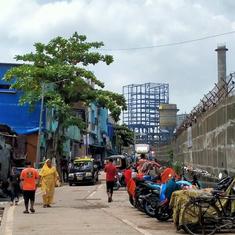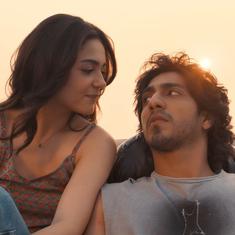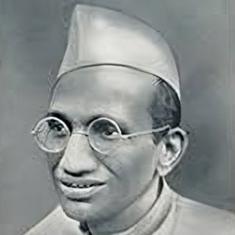As may be expected, reviews of Rama Bhima Soma: Cultural Investigations into Modern Karnataka have focused on the vast and varied connections between life and literature, and state and society, that the book has aimed to chronicle. Karnataka, the home state of the author, is the playground for the ball game introduced to us through the title, which is also an extremely imaginative metaphor for democracy. For this interviewer, the tales of civil society and activism, their admirable struggles, and their latent possibilities are quite as important. The book is a personal narrative, without the pretence of being all-seeing or all-knowing. The narrative would not be possible without the several personalities who are its anchors, whether dead or living, obscure or celebrated.
The journalistic style may leave some feeling ignored, but this very mode signals an openness to engage with them in the future. Indeed, pluralism is the personal creed of the author, constituting both the ends and the means. It might seem as though certain movements and figures, such as socialism and Gandhi, respectively, receive inordinate attention or seem omnipresent.
But one must remember that the author has dealt with the 20th century and Karnataka on its own terms, and not through the polarised lens of present-day discourse. This makes the account entertaining and enlightening. The influence of Gandhi on writers, activists, and even politicians and civil servants is palpable, and not merely the projection of the narrator. The book provides much for historians and sociologists to investigate.
Despite the faithful recording and echoing of leftists that they failed to engage culturally with the masses, the book amply demonstrates the deep interest and grounding of writers (who may broadly be grouped with the left) in Indian religions, philosophy, and folk culture. A telling line is the claim by UR Ananthamurthy that they earnestly searched for god but returned empty-handed. This belies claims of mindless imitation of the West, often levelled by the right wing. Instead, their own ideologues come up woefully short, offering only identitarian cliches and a call for arms. Leaving aside these musings forced upon us by daily headlines, the true heroes in the book turn out to be activists and members of civil society, who have bravely persisted in working out the truth and laying it bare before society and the state.
From the unimpeachable Gopala Gowda, who fought for land redistribution to the Dalit activist Kotiganahalli Ramaiah with his distinctive cultural vision that sees children as the true wealth of society, these sketches remind us of the intricate relationship between individuals, society, economy, and culture. Time and again, we have realised that none of these is complete without the other. The examples of the civil servant Uma Mahadevan-Dasgupta, who is spearheading a reinvention of children’s libraries or the environmental activist SR Hiremath with multiple wins against industrial giants, might kindle in us a recognition of what is important in the long term. The latter’s quiet training of future activists and willingness to wait out a dark phase in Indian environmental destruction is inspiring. The book, thus, not only looks at the past through its creative web of connections, which is both deep and surprisingly light, but also provides a sourcebook for those who dream of bettering the world around them.
In a conversation with Scroll, Srikar Raghavan discussed literature, history, and politics against the backdrop of his research. Excerpts from the interview:
It is understandable that in tracing social movements, the emphasis is on the relationship between literature and society. However, literature is perhaps our main recourse for thinking about the self. For instance, even though UR Ananthamurthy’s writings might be criticised as “self”-indulgent, he is also at his best in that mode. Based on the literature that you have read, what are the selves that were realised in it?
Autobiographies and memoirs gave me an entire range of selves on a platter – the genre is a flourishing one in Kannada. They were the first books I read when I started on this project too, and I found them to be invaluable sources of history as much as they formed multitudes of self-hoods – from subaltern histories to activist chronicles to tell-all feminist memoirs. Personally, my favourite discoveries were Gandhi Classu and Monusmriti – the autobiographies of Kum Veerabhadrappa and Bolwar Mahammad Kunhi – which are both hilarious, rollicking, unusual texts. Historiography becomes a kind of self-unravelling in itself, a personal quest to master one’s birthland and its history, exemplified by the life of MM Kalburgi, say, whose students remember him as a man “who devoured entire shelves”, and not just individual books (or selves?).
The Navya (Modernist) movement of the 50s and 60s was self-professedly a self-investigation project, and it sought to plumb the interiors of the subjective self, which it believed had hitherto been neglected by Kannada writers. These modernists went in pursuit of ruptures and transgressions, like the character Praneshacharya in Ananthamurthy’s novel Samskara, who experiences something akin to spiritual emancipation after making love to the fisherwoman Chandri. They were also trying to capture a desi earthiness (Gopalakrishna Adiga’s famous mannina vasane) that could somehow absorb cosmopolitan modernity into local roots.
AK Ramanujan’s experiments with ingesting mescaline – which leads him to some extraordinary verse-musings expressing great longing for his then-separated wife – or the linguist and poet HS Biligiri’s experiments with LSD (which he writes about in Sakshi magazine in the early 70s) where he sheepishly wonders what his sheltered wife must be thinking regarding his latest proclivities – give us another interesting glimpse into the interiors of the self that the Navya generation desired to explore. Modernism (in life as in literature) could expand the self, breach puritanical codes, and lead to new sensorial pastures.
Those in Karnataka on the cultural right might feel that you have given them short shrift. Your thoughts on their vision for society are clear enough. However, let us take up the claim of being grounded in religion, or rather a pure version of it. What does Hindu conservatism have to say for that bit of religion that is beyond codes of interpersonal conduct? Did you find anything appealing or interesting?
The term “cultural right” might require some unpacking, because culture, it often seems to me, is a realm where ideologies can be stripped of their rigidities and held up for scrutiny. But I see what you’re getting at, and I think I have tried to track a trajectory of this sensibility throughout the book, beginning from the early twentieth century, through figures like KV Iyer or Pandit Taranath. That inaugural generation of Kannada literati was hugely animated by Gandhian ideals (austerity, reform, pluralism), and these strains of thought have exercised much influence on social movements thereafter too. Even in the second half of the century, writers like Ananthamurthy and Shankar Mokashi Punekar embodied forms of conservativism (vis-à-vis religion and spiritual traditions) that fell under this broad rubric – it was again a Gandhian attempt to rescue Indian philosophical traditions from the stranglehold of modern fundamentalists. The Kannada novelist Triveni adopted her penname as a tribute to Gandhi (his ashes were immersed in the Triveni Sangam and so on), and I heard from activist and playwright Du Saraswati that she had looked up to Gandhi and the Buddha as admirable figures since her childhood. Cultural conservatism and social progressivism can co-exist and need not be pitted as irreconcilable entities.
The presently regnant right-wing ethos does seem to be quite far from these accommodative strains, and I have had to (unfortunately) quote some of their bigotry to prove my point. Of course, this twentieth-century supremacist project has also been helped along by pre-existing hierarchical ideologies that had already fragmented Indian society. The cultural right, which I found interesting, had tried to tackle these inheritances head-on, and they saw themselves as fiercely critical insiders. It is in this regard that I dissect Shankar Mokashi Punekar’s 1980s novel Avadheshwari, which reanimates a historical time (set in ancient Ayodhya, no less) before the rigidification of social hierarchies, in an attempt to see religion and mysticism as the quest for personal codes rather than collective impositions. It produced an existentialist (and riveting) portrayal of birth-based caste organisation (and ancient queenship), and it was intriguing to me that Punekar himself was a deeply religious man, devoted to the Sathya Sai Baba (as well as Indira Gandhi), greatly interested in ancient Hindu traditions, who saw his bhakti-sensibility as a gift to be savoured. He was also widely respected and admired by the Kannada world – atheists, believers, and Emergency-opposers alike.

I remember this scary looking map from around 2010 that showed large chunks of India in red, denoting the Naxal threat. But reading the chapter on Saketh Rajan, the Maoist revolutionary who was shot dead in 2005, it seems that in Karnataka at least, they were only a handful of people in self-exile and up in arms. There was a fork in the road that the state ignored in reacting as it did with overwhelming force. As we speak, Maoists in central India are surrounded, vastly outnumbered by troops who seem dead set on a “final solution”. What might have been a happier ending for Rajan, and what could the nation still do to those who survived?
It might also be worthwhile to recall that those were the years when the Salwa Judum was engaged in horrific forms of state-sponsored vigilante violence in Chhattisgarh, recruiting child soldiers for its activities and essentially turning entire communities against each other – the Supreme Court deemed it illegal and unconstitutional in 2011. This has since remained the high watermark of the state’s malevolence towards its own people in the war against Naxalism, as well as a spectacular display of its incompetence and immaturity. The situation in Kudremukh during the early 2000s was very different from this theatre of war playing out in the forests of Dandakaranya – a reality that both the Naxals and the state failed to grasp. There was sufficient space for civil-society protests shorn of gun-toting, and the Karnataka government could have initiated genuine efforts towards dialoguing with what was, in reality, an extremely small group of Naxals – I heard there might have been around thirty people in the movement at its height in Karnataka. Disarmament and rehabilitation of guerrillas is the only happy ending really possible – this would also be greatly aided by the emergence of a sensible and discerning media to cover the process.
The successful rehabilitation of ex-Naxals Noor Shridhar and Sirimane Nagaraj, who left the movement after Saketh Rajan’s killing, is evidence that such things are possible. The two of them have also remained ardent advocates of furthering this model since they believe that there is a broad consensus regarding peaceful capitulation – Maoists mostly see themselves as a spent force and are presently requesting dialogue in Central India too. A truly happy ending would also have to be accompanied by the reining in of mining hegemons who wish to conquer vast tracts of resource-laden landscapes for private enrichment.
What do you think of the relationship between liberalism and the state? One may not be in awe of it, but you need the state to enforce rights at the very least. The state might have to lean on its muscular arm to accomplish this. What are your thoughts on the very real practical, and ethical dimensions of exercising power?
Increasingly, the role of the state in our country has been reduced to just advancing the interests of Big Business. Those who continue to believe in the benevolence of neoliberalism would like to see the state slim down completely – in America, you now have private prisons and so on. This is nothing less than a wholesale outsourcing of the practical and ethical purposes of the erstwhile state. Back here, I’m amazed to see people like Shekhar Gupta – who understands not an ounce of economics – vigorously endorse the disastrous austerity policies of those like Javier Milei. It is also becoming clear that India is trying to ingratiate itself on the world stage with new imperialist forces that are bent upon perpetuating an extractive oligopoly, in collusion with some of the nastiest demagogues on the planet. These developments must be critiqued fiercely. On the ground, the state’s muscle should be directed towards strengthening democratic institutions, and towards investments in health, education, rural community-building, and a politics of care that goes beyond mere sponsorship. This is in addition to its traditional responsibilities in terms of defence and internal security, which goes without saying.
Vittal Malekudiya was the first graduate from his tribal community but was arrested arbitrarily, on grounds that he was a Maoist since he had some literature about Bhagat Singh. The campaign for his release which brought in even the national leaders of the Left, was surprising and heartening to me. Today, Umar Khalid, Gulfisha Fatima and others are locked up on equally trumped-up charges. However, there has been little outrage or sustained protest regarding these. You write of the disagreement over “-isms” among activists. Has the fear of even pronouncing these words prevented civil society from banding together?
There are actually some highly uncivil elements of our society, which includes the mainstream television media, that work extra hard to discredit individuals and morph public perception of these issues. Outrage and protests have happened on social media and many public figures have consistently highlighted these unlawful imprisonments, but there seems to be a more perverse and intractable crisis in the legal system as well. Vittal Malekudiya’s story is really just a wild anomaly in a country where Gauri Lankesh’s killers are out on bail, even as Umar Khalid and Gulfisha Fatima have been awaiting trial for five years. The lack of transparency, the nightmare of bureaucracy, the cunning of the incumbent regime – all of these come together, and there seems to be a desperate need for serious judicial reforms.
What is the burden of history on modern Karnataka? Reading Prachi Deshpande in Creative Pasts, we understand that the search for a “Maharashtra dharma” has been present for long, which helps in understanding the figure of Shivaji. How do you interpret society's tryst with the past?
This is a really interesting question and connects with your earlier thoughts on the cultural right. If there is one thing that unites the Kannada world (left, right and centre), it might be the unhindered admiration for the treasure trove that is vachana literature, the genre-shattering, king-denouncing, free-spoken body of verses which emerged in the 12th century. Its outsize influence on Kannada cultural history cannot be overstated. The vachanas become nothing less than a primordial ore of ideas when seen through the eyes of all the eminent scholars and translators (from MM Kalburgi to AK Ramanujan to DR Nagaraj) who found in it a desi source of social egalitarianism and universalism – ideas we tend to conflate with the European Enlightenment.
While the early 20th century sub-nationalists (like Alur Venkat Rao) looked to the Vijayanagar Empire to inform their sense of glory, the more serious historians of the succeeding generation (Kalburgi in particular) saw encapsulated in the Sharana rebellion and its vachana heritage nothing less than the genius of this land, a kind of “Karnataka Dharma” perhaps. Also, if you scrutinise the founding historical fiction that went into the creation of the Karnataka statehood movement in the early 20th century, the first thing which might strike you is that this imaginary did not incorporate the many sultanates of the Deccan. Of course, this was more due to ignorance rather than malevolence at that time. In the years leading to his assassination in 2015, MM Kalburgi was leading an ambitious project to translate 16th century Adil Shahi poetry to Kannada (from Persian, Arabic, and Urdu), which was completed a few years ago. The excellent work of scholars like Richard Eaton and Rahamath Tarikere on the history of Sufism in the Deccan must also bear mention here. I was also intrigued to hear from a VHP ideologue that he’d read Manu Pillai’s Rebel Sultans with some interest. I think we’re seeing a new wave of reckonings with history (however contested they might be), and there is still much work to be done to recover (and chronicle) these pasts in all their complexity and wonder. There is an epigraph in the book from Ibrahim Adil Shah II’s 16th century collection of verses Kitab-i-Nauras, which is his explication of the nava rasas, held together by his deep devotion to the Goddess Saraswathi. By all standards, he comes across as an extraordinary figure of aesthetic liberalism – this is reflected in Deccan art from that period too. I heard from an audience member at an event in Mysore that he had lived in Bijapur for years but still never encountered these histories. Might these universalist imaginaries not be valuable landmarks in our current search (the world over) for alternatives to parochial nationalisms?
Shreyas Kolpe is a PhD scholar in History at Manipal Institute for Social Sciences, Humanities and Arts.










